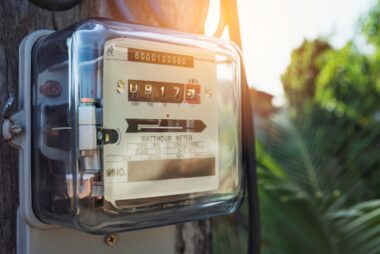One of the main goals of our IoTMaker Challenge has been to help unearth (an appropriate description for this e-Pot idea) some new and innovative IoT ideas and solutions for this modern world; as well as encouraging everyone to put their minds to the test and see what they can come up with. Hopefully, we’ll end up inspiring future innovators similar to 15-year-old New Yorker Kenneth Shinozuka, who developed a connected sensor to help his auntie care for his grandfather suffering from Alzheimer’s disease.
The Challenge has led to some eye-catching entries, like IoT-connected motorcycle helmets that update bikers in real time, an IoT Traffic Accident Detector and even a swear jar that invoices you! However, one of the best entries we’ve seen hasn’t been transport or swearing related; Mohamed Khalil Zendah’s e-Pot has impressed us a lot, and has made our shortlist as a result.
Mohamed’s e-Pot solution is an automated greenhouse system for indoor plants. Using Android and a Cinterion Concept Board, the solution allows the user to control irrigation and monitor light, temperature and humidity remotely. Graphs showing the plant’s progress and vital statistics are sent to the user’s smartphone so they can keep track of its health, while water is automatically dispensed when the soil moisture gets too low.
This could well be the future for office and house plants – in fact, it’s happening right now. AT CES last week, we saw Parrot, known mostly for its drones, unveil its ‘Parrot Pot’, a connected plant pot that waters plants automatically after measuring and assessing the moisture of the soil, ambient temperature, fertilizer levels, and light levels. And let’s not forget about our own solution; Horst, the M2M-connected office plant which tweets when it needs watering. Similarly to e-Pot, Horst uses a Java application to monitor soil humidity and temperature, as well as air humidity levels so a decision can be made for watering. However, Horst can only request watering, unlike the e-Pot solution and Parrot Pot that can initiate watering automatically.
Whether it’s e-Pot, Parrot Pot or our own beloved office plant Horst, we hope these ideas and solutions help inspire you to also become an IoT Maker; you could be the next Kenneth Shinozuka – or perhaps the next Mohamed Khalil Zendah if you’re keen on IoT-connected plants. Let us know your thoughts by tweeting to us @Gemalto, or leave us a note in the comments section below. And don’t forget to keep an eye out for the final results of the IoTMaker Challenge; our panel of IoT experts will be assessing the shortlisted entries and deciding on a winner soon.


